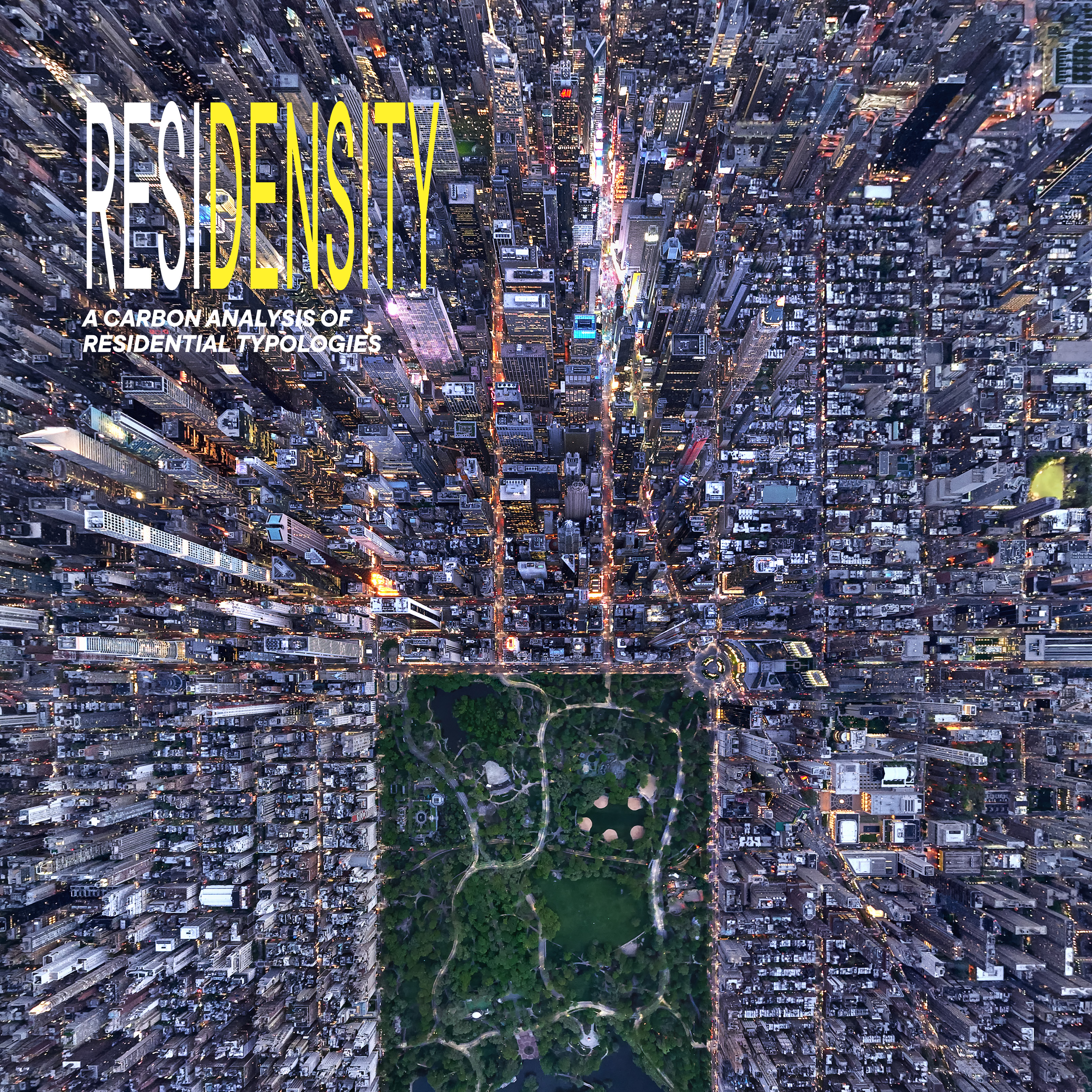March 22 | ORO Editions
RESIDENSITY: A Carbon Analysis of Residential Typologies
A new book published by ORO Editions by Adrian Smith + Gordon Gill Architecture
RESIDENSITY is the culmination of a seven-year study that analyzes nine building typologies to develop a deeper understanding of the relationships between different building densities and the amount of land and infrastructure required to support them. The book investigates how much carbon—both embodied and consumed—is used in each typology and how it affects density and open space from the viewpoint of sustainability, carbon emissions, and carbon sequestration. The study factors each condition to determine which building typology is the most sustainable on a comparative basis.
The book was initially conceived as an internal study that asked several density related questions including: What if we could build a mile high? What would it be like to live there? How much energy would it take to build such a building and where would the energy come from? What drives people to think about building higher and more importantly, is it even the right thing to do? Alternatively, why do some people live in houses in the suburbs? How do their choices of habitat impact the environment? The book further explores what type of residential community has the lowest impact in terms of land use? What type of residential community has the lowest energy demand? What type of residential community has the lowest carbon-dioxide emission arising from transportation? What type of residential community has the lowest overall carbon footprint?
To answer these questions objectively, we developed a robust study methodology with boundaries and assumptions that could be applied equally to low- and high-density communities. We chose communities of 2000 residential units, with an average unit size of 150 m2 net residential area, as the prototypes and ASHRAE climate zone 5A as the location. Nine prototypical buildings were designed – Megatall, Supertall, High-Rise, Mid-Rise, Low-rise, Courtyard, Three-Flat, Urban Single-Family, and Suburban Single-Family – set within nine prototypical communities. The study designates an archetypal residential community of 2,000 units with an average unit size of 150 sm as a reasonable and representative cross section of different housing typologies.
Each building prototype was verified and tested for constructability and code compliance against Chicago Building Code and ASHRAE 90.1 (2010). Each typology is representative of best-practice construction with commonly used materials and mechanical systems to allow for a better comparison of the different models.
To purchase RESIDENSITY, see the listing HERE on ORO Editions' website.
